Table of Contents
Azure App Registration vs Enterprise App – What’s the Difference? In some cases, people even use both terms interchangeably. But App registration is simply the actual application object where you configure application settings. Whereas Enterprise Application is a representation of the application within a directory.
However, it gets confusing because a user grants consent from both the Enterprise Applications blade and the App Registrations experience in the Microsoft Entra admin center. Therefore, we will carefully study each topic on its own before highlighting the differences between them. So that after reading this article, you will have the answers you need.
What is Azure Application Registration?
Firstly, App registration is a way to reserve an application in AAD (Azure Active Directory). Hence, Azure communicates with the application and send tokens to it thanks to registration. If you want to integrate an application with Azure, you must register it in the App Registration experience.
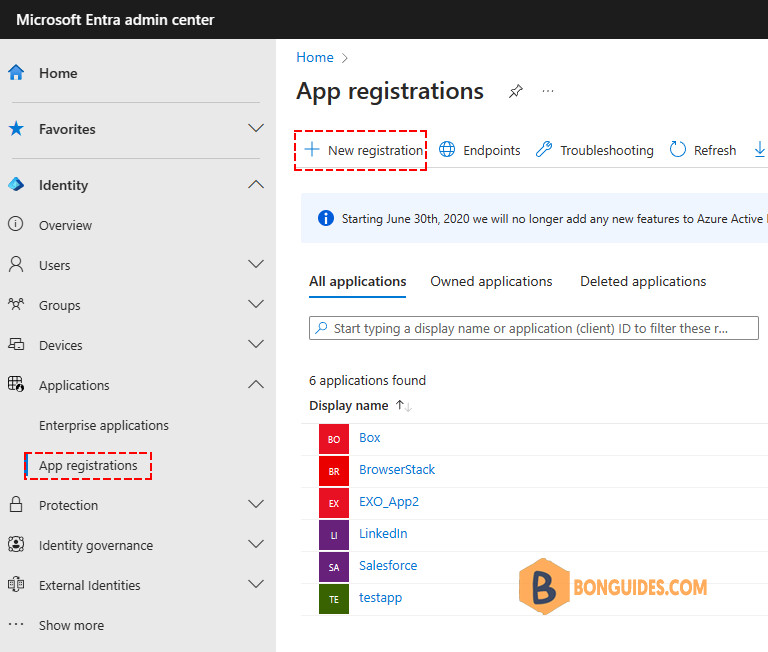
The App Registration experience allows you to configure the Redirect URI, the address to which the authorization server directs the user after you have successfully authorized the app. The logout URL, the address to which your users will be directed after they have logged out; API access (if necessary), and custom app roles for granting access to users or other apps.
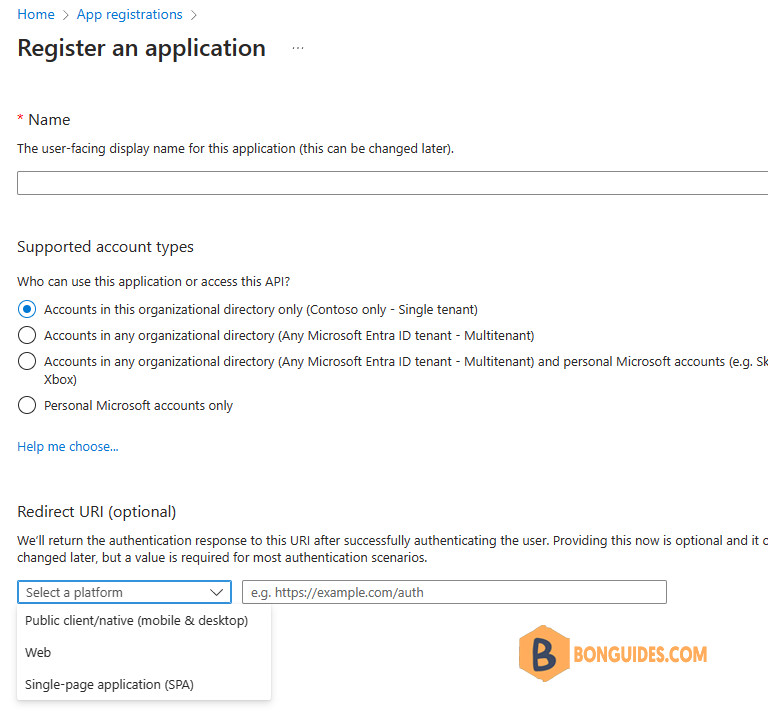
Entra ID gives your application a special Application ID when you register it. Additionally, it also gives you the option to add features like credentials, permissions/roles, and sign on. Specific users might also have limited access. This is possible by changing the default settings, which by default only permits users from the domain in which you registered your app to sign in.
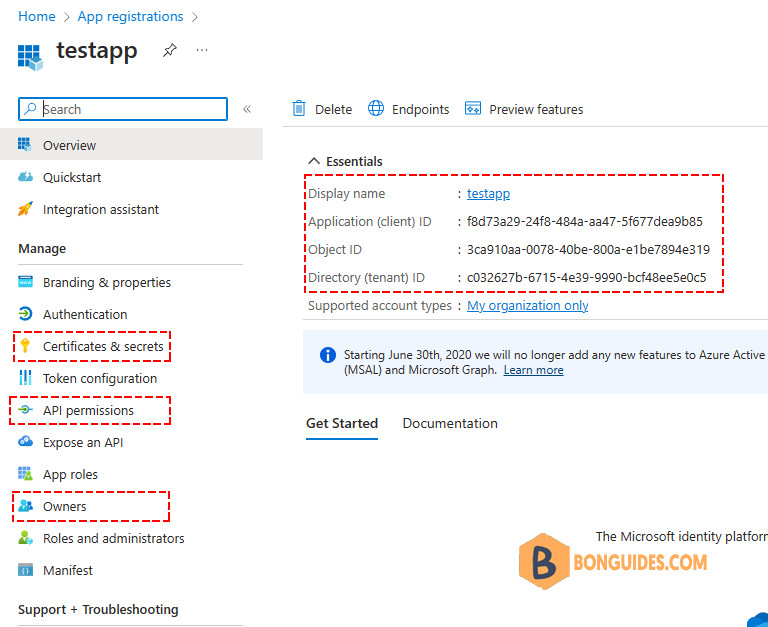
However, it is necessary to register each application you want the Microsoft identity platform to conduct identity and access management (IAM). Whether a client application, such as a web or mobile app, or a web API that supports a client app, registering it creates a trust connection between your application and Microsoft’s identity platform.
Features of Azure Application Registration
Depending on the use case, you can utilize Azure application registration for single tenant or multi tenant reasons. However, it only exists in one directory, also known as its home directory.
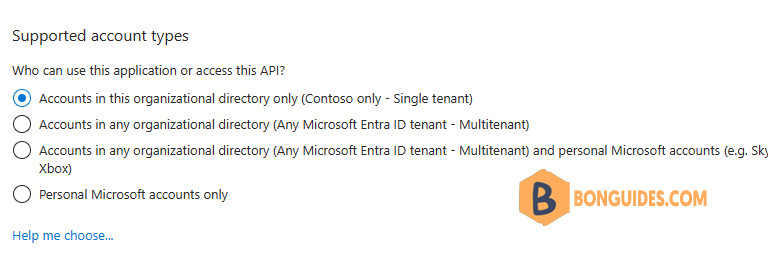
Two types of objects form when the application registration finishes:
- First is the Application Object, which you see under App Registrations in Entra ID. Using this object as a template, you may configure various things like App Roles, Client Secrets, and API Permissions.
- The Service Principal Object is the second one, and you can find it in AAD’s Enterprise Registration blade. In the Enterprise Registration blade of AAD, each Application Object created via the Azure Portal, the Microsoft Graph APIs, or the Entra ID PS Module would produce a corresponding Service Principal Object. An application object gives rise to a concrete instance called a service principal. A service principal inherits specific properties from the original object.
App owners manage all aspects of their registered Applications. It is important to review the ownership of all applications in the organization regularly. However, application ownership should be kept to a minimal set of people within the organization. Additionally, any user (may not be listed here) with administrative privileges to manage any application (e.g., Global Administrator, Cloud App Administrator etc.) can view and edit the application registrations.
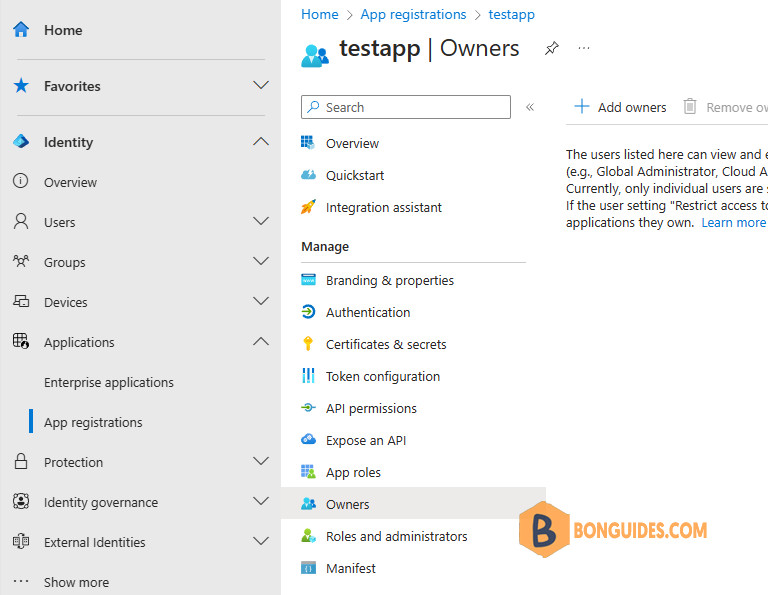
How to Create an Application Registration
1️⃣ Use an administrator permitted account to log into the Microsoft Entra admin center. You must use an account from the same Microsoft 365 tenant when registering the app.
2️⃣ Then choose App registrations, then New registration. Enter the following information on the Register an application page to register your application:
- Enter a comprehensive application name that will be visible to users in the Name section.
- From the section titled Supported account types, choose Accounts in any organizational directory.
- To create the application, select Register and then enter the Redirect URI.
3️⃣ Hover your cursor over the application (client) ID value on the app Overview page. Then click the Copy to clipboard icon to copy the value. You’ll need to specify this in the right place in your application’s authentication code or app.config file.

4️⃣ Next, select the API permissions tab, and click on Add a permission.
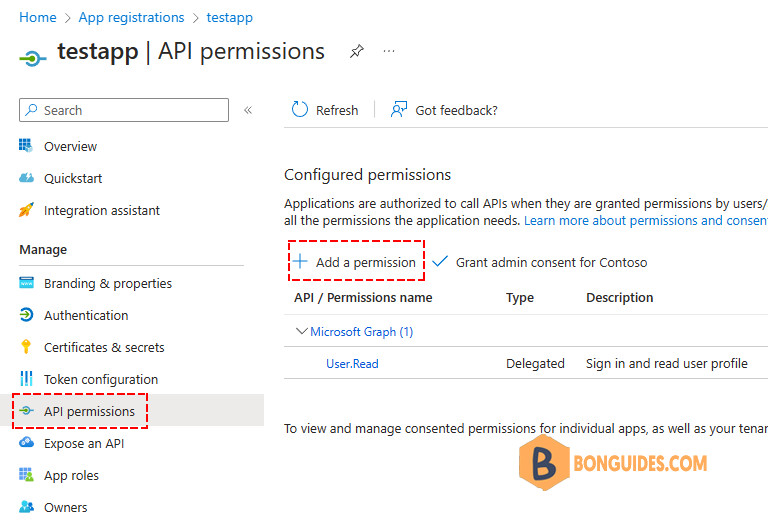
5️⃣ Then search for and choose the needed permissions that you want to assign to the app.
6️⃣ This then completes the registration of your Application in Azure Active Directory.
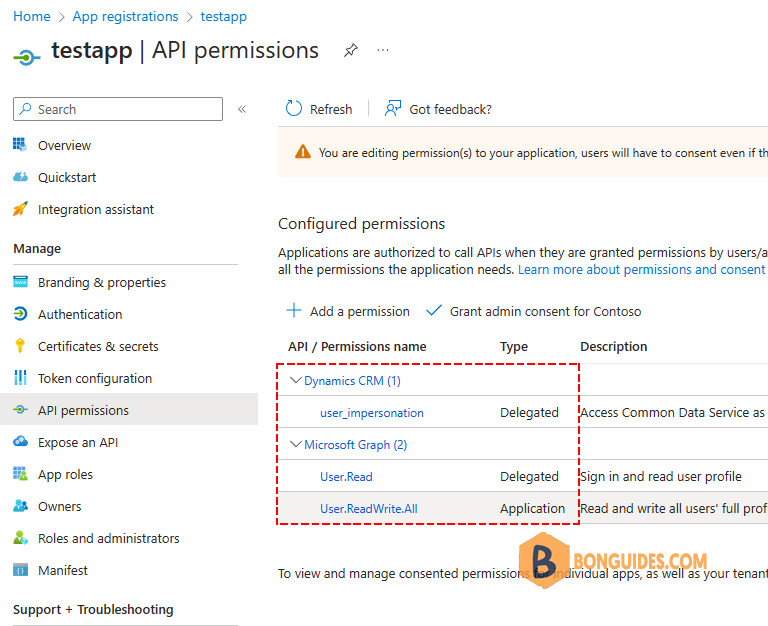
Up next with Azure App Registration vs Enterprise App – What’s the Difference? It’s time to learn about Enterprise Application.
What is an Enterprise Application?
Applications published by other organizations and available for usage within your organization are referred to as enterprise applications.
They are listed in the Azure Active Directory gallery. For instance, you integrate an application from the Enterprise Applications option in the applications blade if you wish to manage SSO within your company and use Facebook or LinkedIn as an example.
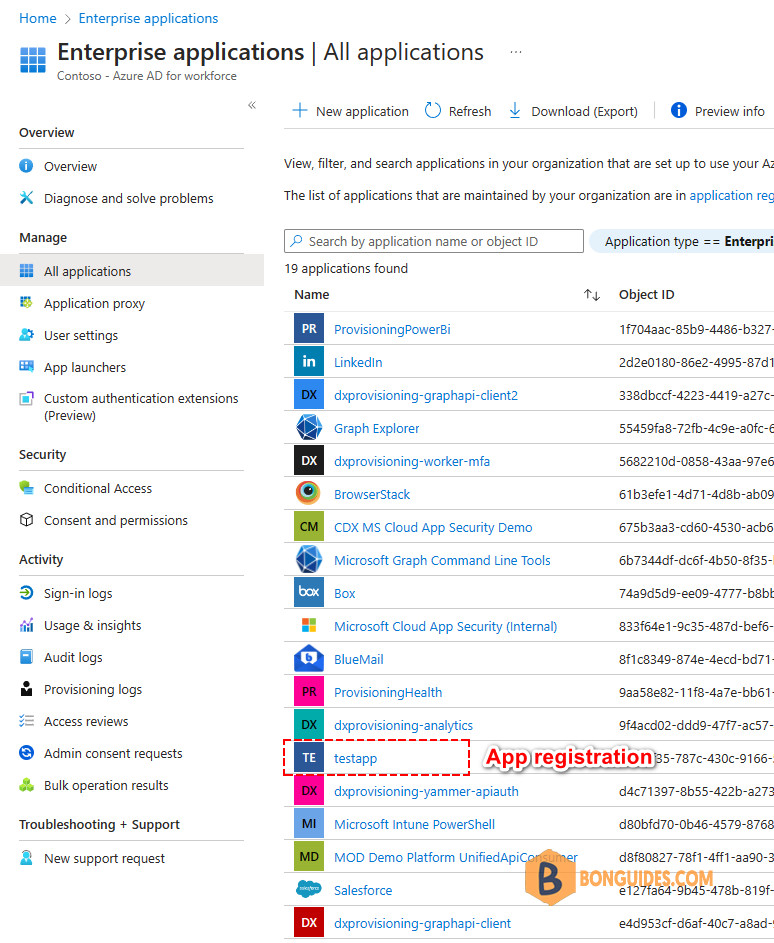
The Enterprise Apps blade will also display Service Principals, which are instantiations of your registered applications in the tenant for your applications that you have registered.
Features of Enterprise Application
Assigned users can log in to the application via the User access URL, the My Apps portal, or by going directly to the application URL, if this option is set to Yes. Only users who have been assigned to the application may sign in if an assignment is necessary.
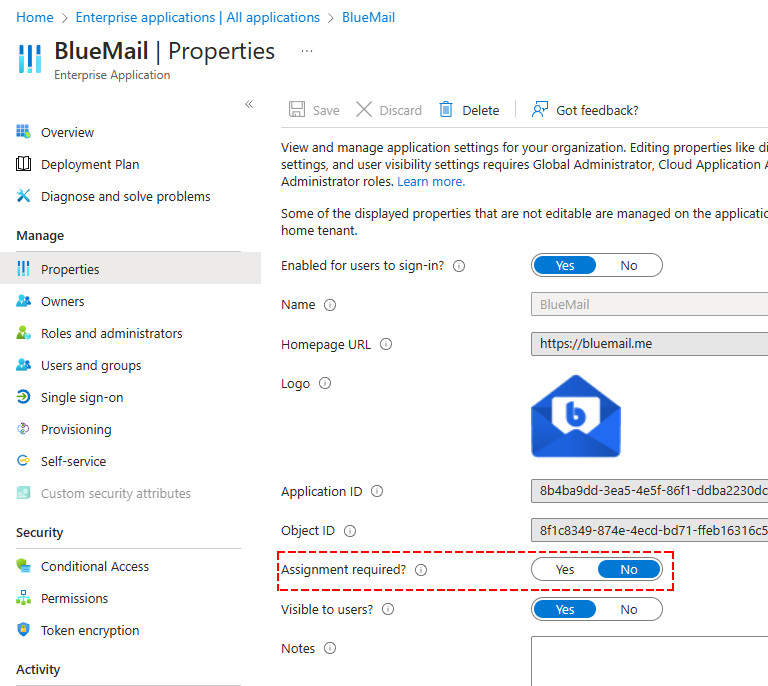
Users could log in using the homepage URL if they created the application expressly for themselves. For instance, when the application is chosen on the My Apps interface, the URL is launched. If the application is from the Entra ID Gallery, you can go to this URL to find out more about it or its vendor. You cannot change the homepage URL within enterprise apps, but you need to change the application object’s URL.
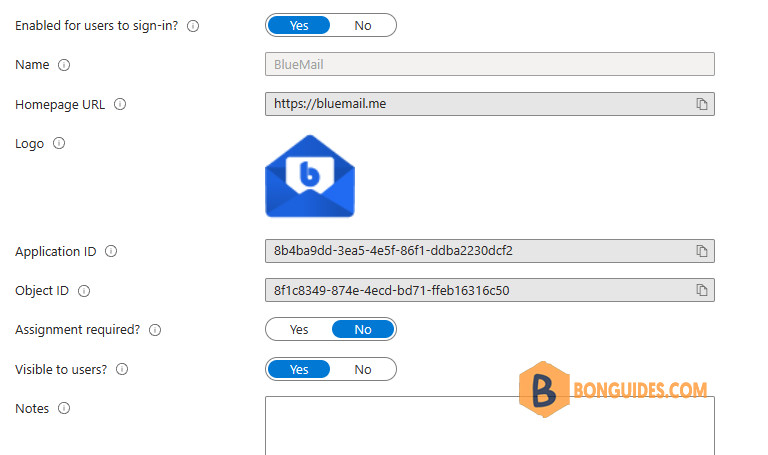
The Application ID in your directory is a special identification for the application. You can use this application ID to contact Microsoft Support at any time. You can also use the identification with the Microsoft Graph PowerShell SDK or the Microsoft Graph APIs to perform actions.
The main service object connected to the enterprise application has a special identification number called an object ID. This identification may be helpful when utilizing PowerShell or other programmatic interfaces to perform management actions against this application. It is different from the application object’s identification.
The identifier serves to change data for the application’s local instance, including assigning users and groups to the application. You also update the enterprise application’s properties with the identification, and you can do a single sign on configuration with it.
How to Add an Enterprise Application to Your Entra ID Tenant
You need an Entra ID user account to add an enterprise application to your Entra ID tenant. You can open a free account if you don’t already have one, and you’ll also need one of the following roles: Global Administrator, Cloud Application Administrator, or Application Administrator.
The following are the steps to follow:
1️⃣ Sign in to the Microsoft Entra admin center using one of the required roles. Choose Enterprise applications from the left menu. The All applications tab appears, displaying a list of the apps in your Entra ID tenant.
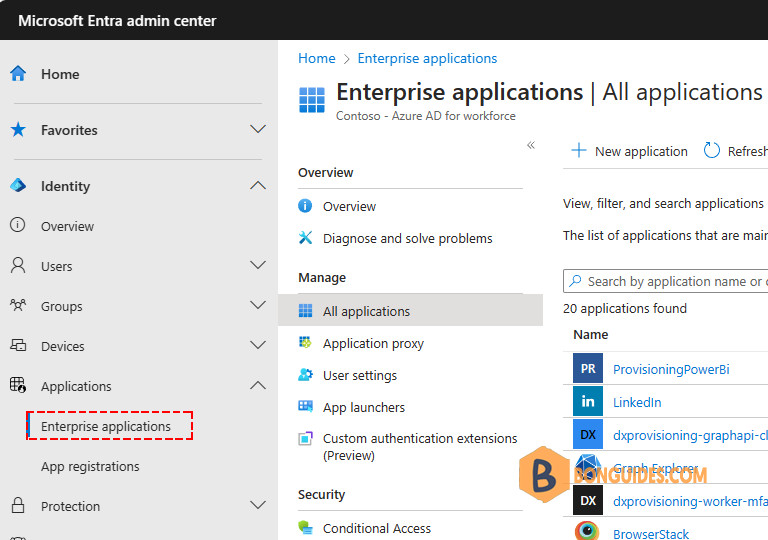
2️⃣ Select New Application from the Enterprise applications pane. The Browse Entra ID Gallery pane displays tiles for cloud platforms, on premises, and featured applications.
4️⃣ Finally, you must enter a name that you will use to identify the instance of the application. For example, Entra ID SAML Toolkit 1. Then choose Create.

Now it is time to find out Azure App Registration vs Enterprise App – What’s the Difference ?






